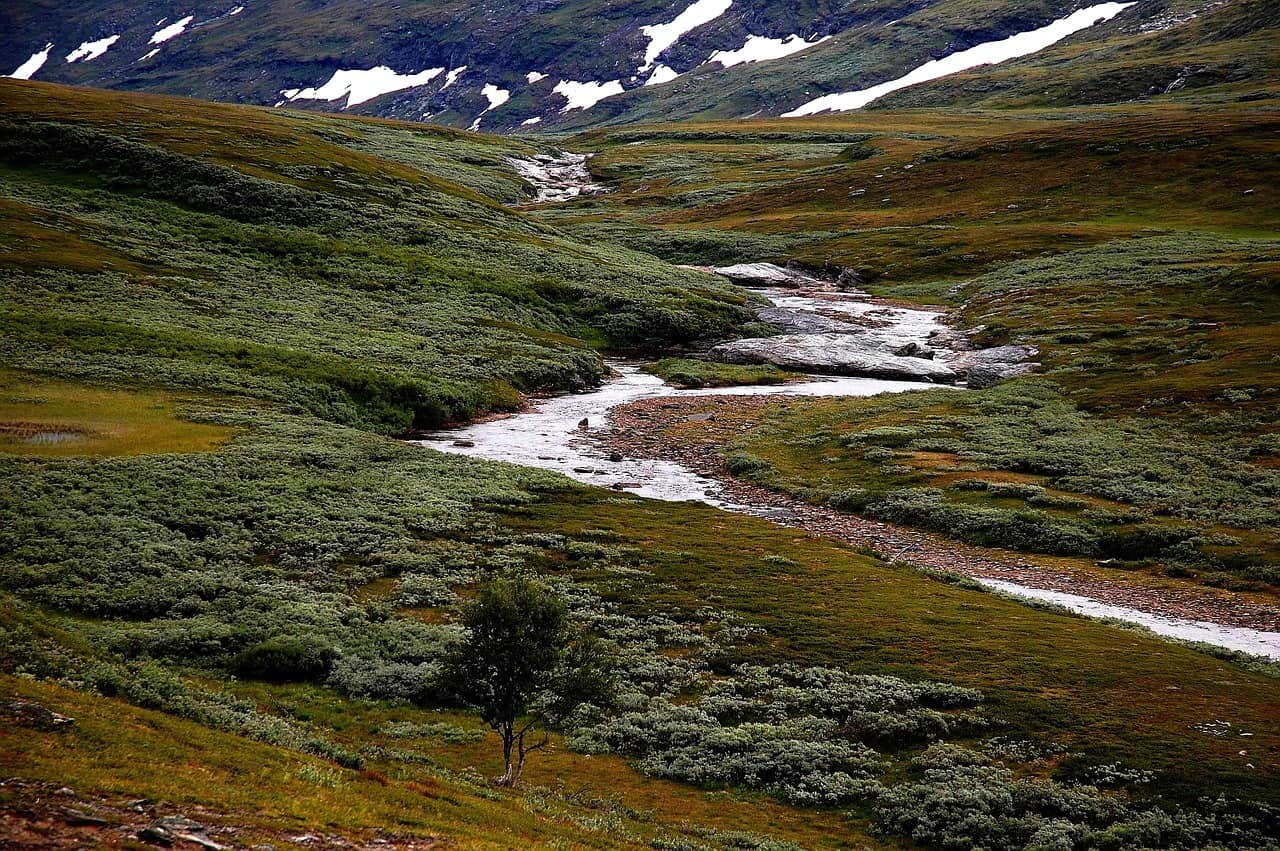Research shows that an affected area’s methane emissions are 10 times less than at another site owing to ecological changes.
Methane is a potent greenhouse gas and plenty of it is locked up in permafrost, which is to say in perennially frozen ground in arctic and sub-arctic tundra regions where subzero temperatures prevail year round. Warming temperatures are expected to thaw such frozen grounds, which will lead to the release of vast quantities of methane. That in turn will drive climate change even further.
That’s the bad news. The good news is that according to new research by scientists in Sweden the quantity of methane released from thawing could be a mere tenth of the amount previously predicted as a result of changes in hydrology, plant diversity and the composition of microorganisms in the soil once it has thawed.
A team of researchers from several institutions in the Scandinavian nation measured the release of methane from two areas in the northern part of Sweden: one area where permafrost disappeared back in the 1980s and another where it did so 10 to 15 years later. Their aim in doing so was to see what happens how a landscape adapts to the absence of permafrost over time and how the changes impact on the release of methane from the ground.
“The results show that the first area to lose its permafrost now has methane emissions ten times less than in the other locality. This is due to gradual changes in drainage and the spread of new plant species,” report the scientists, who published their findings in the journal Global Change Biology.
The main reason for the significant reduction in the release of methane in affected areas is that with the disappearance of permafrost water previously stored in the soil at the surface begins to drain away.
“Permafrost acts somewhat like the bottom of a bathtub. When it melts, it’s as if the plug has been pulled, which allows water to seep through the now-thawed soil. Drainage allows for new plant species to establish themselves, plants that are better adapted for drier soil conditions. This is exactly what we’re seeing at these locations in Sweden,” explains Prof. Bo Elberling, a scientist at the Center for Permafrost of the University of Copenhagen.
Another factor is the disappearance of grasses specially adopted to wet areas with sporadic permafrost. These plants have a straw-like system for transporting oxygen from their stems into their roots and the straws also act as a conduit for methane from the soil making its way to the surface and from there into the atmosphere, the scientists say.
However, when the water disappears from the soil, these grasses can no longer thrive and so they are replaced by other plant species better suited to dry soil conditions. “The combination of more oxygen in the soil and reduced methane transport means that less methane is produced and that the methane that is produced can be better converted to CO2 within the soil,” the scientists observe.
“As grasses are outcompeted by new plants like dwarf shrubs, willows and birch, the transport mechanism disappears, allowing methane to escape quickly up through soil and into the atmosphere,” Elberling adds.
In addition, drier soil with new plants growing in it creates more favorable conditions for soil bacteria that help break methane down. “When methane can no longer escape through the straws [of grasses], soil bacteria have more time to break it down and convert it into CO2,” Elberling says.
That does not mean, however, that this excess CO2 is then released into the atmopshere and thereby drive climate change. But even if much of that CO2 does escape into the atmosphere, that is still preferable to the release of methane in vast quantities. “Crucially, even though methane ends up as CO2, it is considered less critical in climate change context as methane is at least 25 more potent greenhouse gas as compared to CO2,” the scientists note.
There is still an unknown factor, which is how climate change will impact precipitation in affected areas. Even as thawing permafrost makes it easier for water in the soil to drain away, increased rainfall or poor drainage in a given area can prevent it from drying out. If that happens plenty of methane will be released from the ground.
“The balance between precipitation and evaporation will be crucial for the release and absorption of greenhouse gases. However, predicting Arctic precipitation is fraught with uncertainty. In some areas we’re seeing increased precipitation, while in others things are drying out, especially in the summer,” Elberling says.
The scientists also caution that more research will be needed to ascertain how areas with similar permafrost in countries such as Canada and Russia will be affected by thawing in coming years and decades. That said, the new research should cause a rethink in our views of methane emissions from tundra in the face of a changing climate, the scientists involved say.
“In their most recent report on the Arctic’s future methane budget, the IPCC (Intergovernmental Panel on Climate Change) has not considered the conditions highlighted by us in the study. Our study reverses the general perception that thawed permafrost is to be consistently associated with increased levels of methane being released,” Elberling stresses.
This story first appeared on Sustainability Times
© 2022 Sustainability Times.
This article is licensed under a Creative Commons Attribution-ShareAlike 4.0 SA International License.












